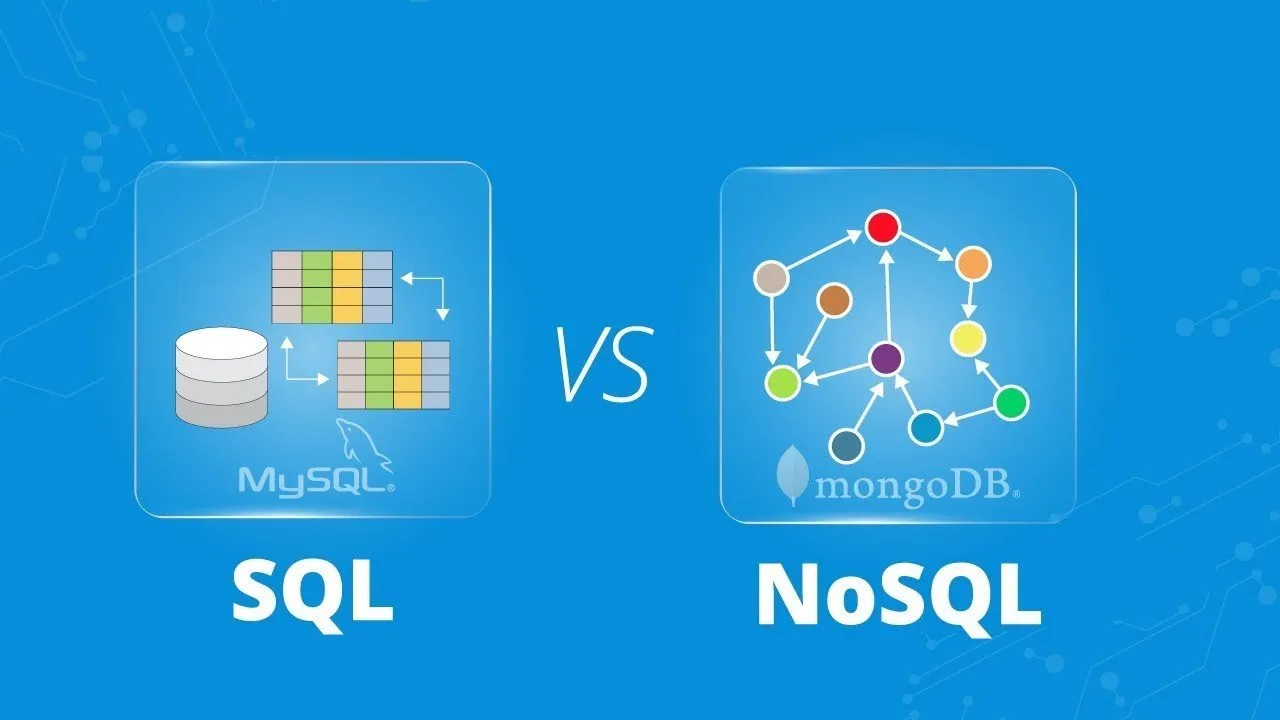SQL vs NoSQL:choosing the right database for your application

SQL vs NoSQL: Which Database Is Right for You?
In the world of databases, SQL and NoSQL have become the two dominant categories. As organizations increasingly rely on data-driven decisions, understanding the differences between SQL and NoSQL is essential. This article will dive into the key differences between these two database types and help you choose the right one for your needs.
🧩 1. What is SQL?
SQL (Structured Query Language) databases, often referred to as relational databases, are the traditional type of databases that use a structured schema to store and manage data. These databases rely on tables with rows and columns and enforce strict relationships between entities. Some popular SQL databases include MySQL, PostgreSQL, and Microsoft SQL Server.
- 📦 Uses a structured schema with tables, rows, and columns.
- 🔧 Supports ACID transactions (Atomicity, Consistency, Isolation, Durability).
- 💾 Ideal for applications requiring complex queries and relationships.
📚 Recommended reading: MySQL Official Documentation
🚀 2. What is NoSQL?
NoSQL (Not Only SQL) databases are designed to handle unstructured or semi-structured data. Unlike SQL databases, NoSQL databases do not have a fixed schema and allow for greater flexibility in data storage. They are especially useful for applications dealing with large volumes of unstructured data, such as big data, real-time applications, and content management systems. Some common NoSQL databases include MongoDB, Cassandra, and CouchDB.
- ✅ Schema-less, allowing flexible storage of data.
- 🌐 Ideal for handling large-scale, distributed data across multiple locations.
- 💻 Offers high availability and scalability features.
📚 Recommended reading: MongoDB NoSQL Explained
📊 3. SQL vs NoSQL Comparison
| Feature | SQL | NoSQL |
|---|---|---|
| Schema | Fixed schema | Flexible schema |
| Data Model | Relational | Document, Key-Value, Graph, Columnar |
| Transactions | ACID compliant | Eventual consistency |
| Scalability | Vertical | Horizontal |
| Use Cases | Financial, transactional, complex queries | Big data, real-time, flexible data models |
🎯 4. When to Use SQL?
SQL is ideal in the following scenarios:
- Transactional systems requiring consistency and integrity.
- Applications needing complex queries, joins, and relationships.
- Systems that require strong data integrity and ACID properties.
Examples:
- Banking systems
- Enterprise resource planning (ERP) software
- Customer relationship management (CRM) systems
🔍 5. When to Use NoSQL?
NoSQL is ideal in the following scenarios:
- Applications with large amounts of unstructured or semi-structured data.
- Real-time applications that require low-latency data access.
- Highly scalable systems with horizontal scaling needs.
Examples:
- Social media platforms
- Content management systems (CMS)
- Big data analytics applications
🧠 6. Performance Considerations
SQL databases are best suited for applications that need to enforce relationships and consistency. However, as data volume and complexity increase, performance can degrade. NoSQL databases offer better horizontal scalability and can handle larger datasets with less performance degradation.
📚 Recommended reading: NoSQL vs SQL: Database Comparison
🧠 7. Conclusion
- If you need complex queries, strong data integrity, and relationships → SQL
- If your application requires scalability, flexibility, and is handling unstructured data → NoSQL
- If you're working with massive datasets, real-time applications, or large distributed systems → NoSQL
📚 Recommended Learning Resources
Whether you choose SQL or NoSQL depends on your application requirements, scalability needs, and data structure. I hope this comparison helps you make an informed decision. Feel free to share your thoughts in the comments! 🙌
